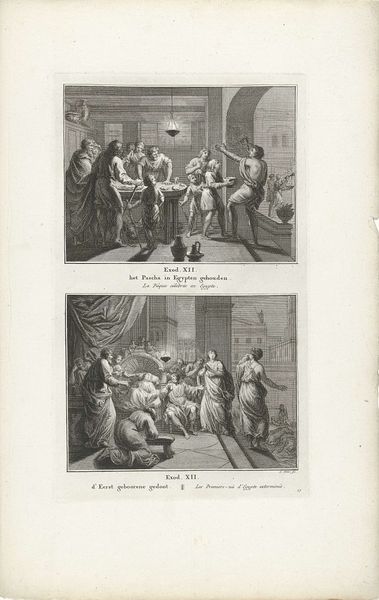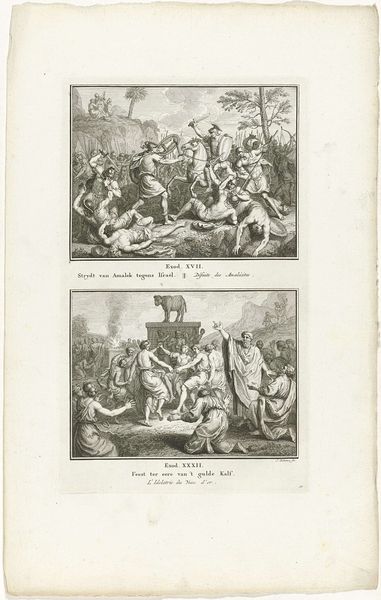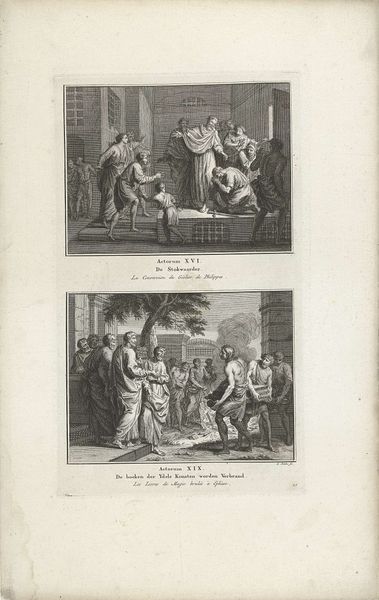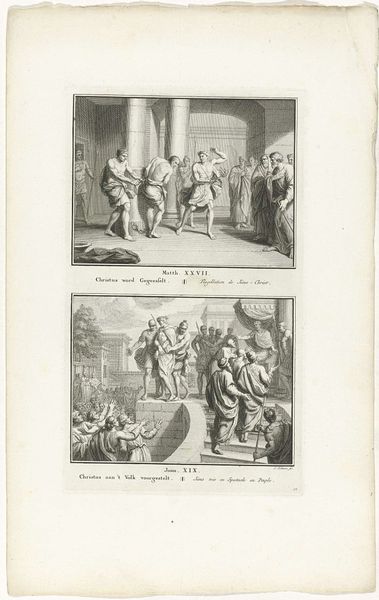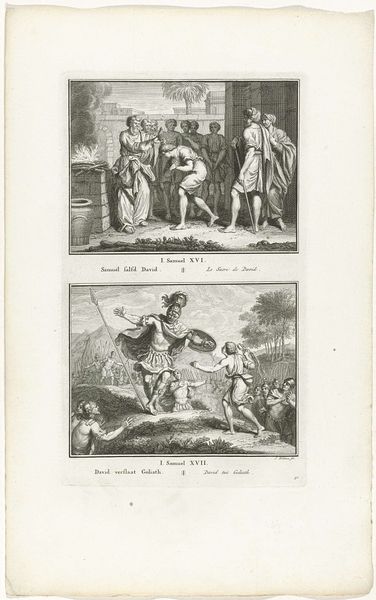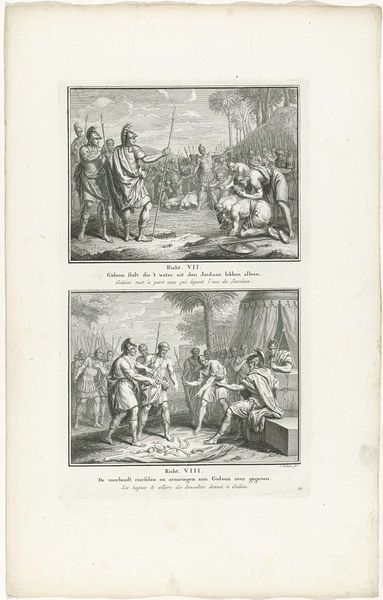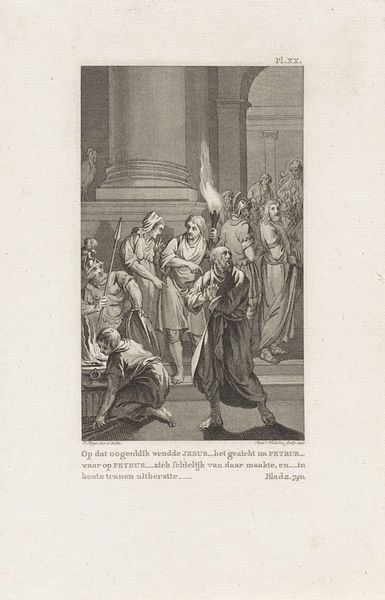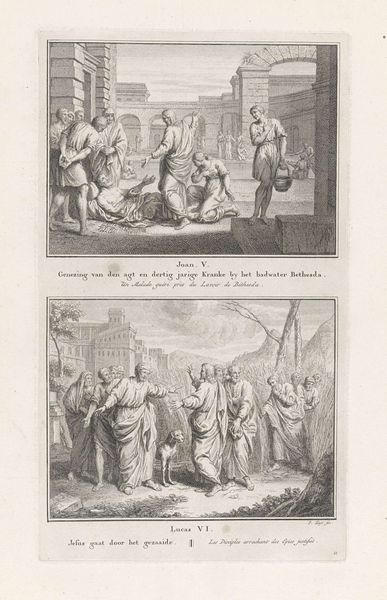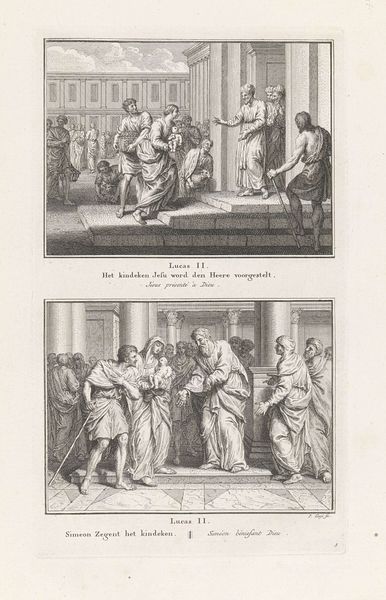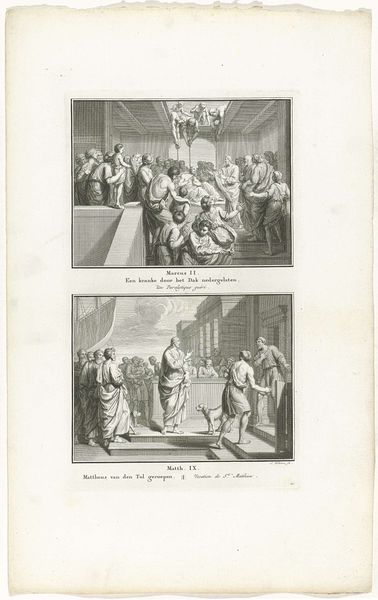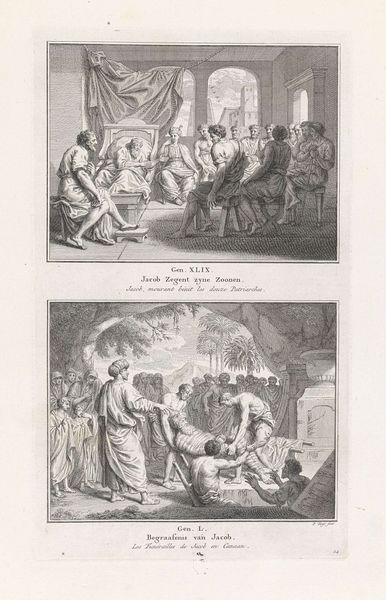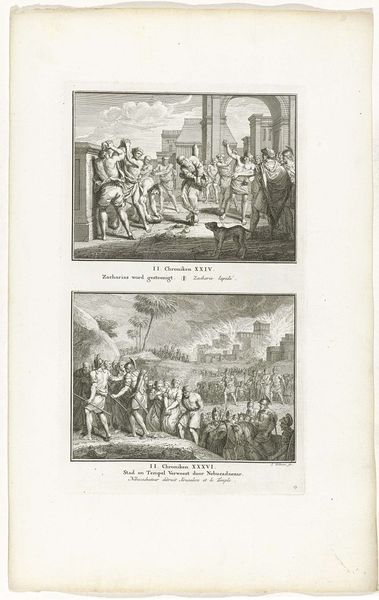
Dimensions: height 324 mm, width 193 mm
Copyright: Rijks Museum: Open Domain
Editor: This is "Elymas Struck Blind and Paul and Barnabas at Lystra" by Simon Fokke, made in 1791. It’s an engraving showing two separate scenes, one above the other. The top one looks almost theatrical, and the bottom one seems to spill out into a grand public space. What stories are unfolding here? Curator: Ah, a double feature on faith and persuasion! What strikes me is the performance element in both scenes. Notice in the top scene how the figures recoil from Elymas, blinded. There's drama, sure, but almost a carefully staged drama. The artist is almost playing with Baroque theatricality - the gestures, the lighting… it's like a scene from a play. The second engraving almost contrasts with this. More bodies fill an expansive space, worshipping. It is public spectacle for all to bear witness. Don't you think? Editor: That’s true, it really highlights the performative aspects of these events! The figures are arranged in very distinct ways, separating those performing the miracle from those reacting. Curator: Absolutely! And it makes me wonder...is it faith, divine intervention, or simply skillful showmanship that wins hearts and minds here? What are the means of achieving belief? Fokke makes you question everything, and nothing at all. Do you see a strong distinction between what the work seeks to convey, and what it truly communicates? Editor: I think I do. I came in thinking this was a straightforward depiction of miracles, but now I'm seeing layers of interpretation about belief and presentation, as you mentioned, as well as visuality and blindness itself, because of course, we can only look through the image as seeing witnesses. Thanks so much for offering new ways to understand Fokke’s intentions. Curator: My pleasure. The questions art provokes are often more interesting than any answers we might find, don't you agree?
Comments
No comments
Be the first to comment and join the conversation on the ultimate creative platform.
